There was a time in the last century when new riders could razz around on highly strung, lightweight two-strokes. These machines echoed the 250cc Grand Prix bikes of the time and were miniature masterpieces developed mainly for the Japanese market, where stringent licencing laws discouraged riders from getting on big capacity sports bikes.
With tightening emissions laws meaning that two-strokes, particularly high performance ones, started to become obsolete in the 21st century, these 1990s strokers are the ultimate evolution of the type. Already fragile when new, a life of being thrashed on the racetracks and roads mean that they are increasingly scarce these days and highly coveted classic motorcycles.
So, to take a trip down memory lane, we decided to take a look at each manufacturer’s ultimate 250cc race replica. We can hear and smell them as we write…
Suzuki RGV250
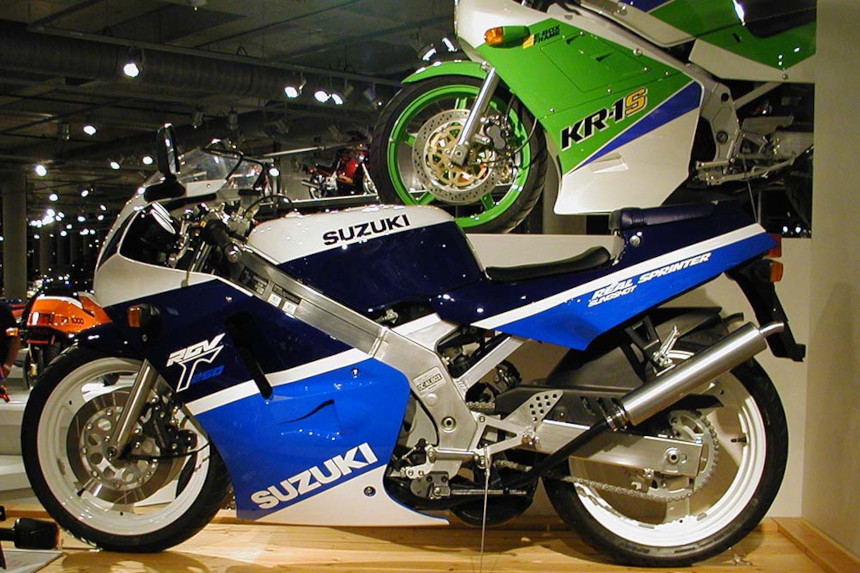
Suzuki were always at the forefront of two-stroke racing, most famously powering Barry Sheene to 500cc Grand Prix world titles in 1976 and 1977.
In the 1980s they released two stunning race replicas for the road. The RG250 Gamma arrived in 1983 and was a technological tour de force of its time, although in 1985 it was overshadowed by the RG500 Gamma, a stunning square four based very closely on the factory Grand Prix racers.
And just as the parallel-twin was getting outgunned by the Kawasaki KR1 and Yamaha TZR in the quarter-litre class, Suzuki once again pulled out all of the stops with the first RGV250 (model VJ21, pictured) of 1987.
With its near 60bhp Grand Prix style 90-degree V-twin motor and sleek bodywork, the RGV was a smash hit with buyers – even if the Kawasaki had a slight advantage on the race track.
The 1991 VJ22 took things a step forward and looked like it had rolled straight off the Grand Prix grid. Power rose to 62bhp, while the chassis was updated with a more contemporary 17” (from 18”) rear wheel, fashionable upside forks and a stunning banana swingarm.
The VJ22 stayed on sale in the UK until 1996. It was replaced in Japan with the completely different VJ23 model, which had a 70bhp 70-degree motor and an even more sublime chassis. Those were never officially exported, but a few did make it to Europe through unofficial channels.
Kawasaki KR-1S
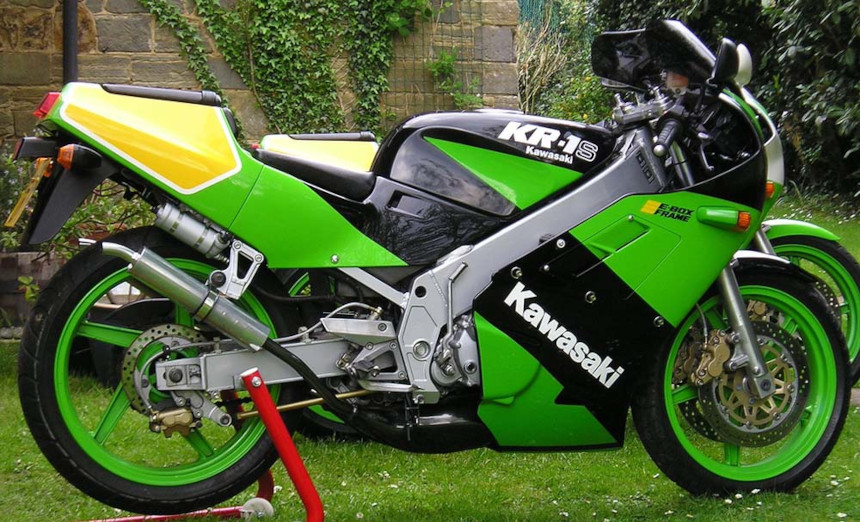
Introduced in 1988, the Kawasaki KR-1 was fast, fragile and flighty. Against the contemporary Suzuki RG250 Gamma and Yamaha TZR250, it was the answer to club racers’ dreams.
The KR-1S came along in 1990 and was an evolution rather than a revolution. It had the same late ‘80s styling and lacked the fashionable gizmos of the competition but, with 60bhp and a near 140mph top speed, it was the fastest 250 around – although the engine was fragile, even by highly tuned two-stroke standards.
The KR-1S also had wider tyres and better brakes, but it was a class Kawasaki never really committed to. They focussed development on the four-stroke ZXR models and abandoned the KR range after making less than 10,000 examples.
Yamaha TZR250R
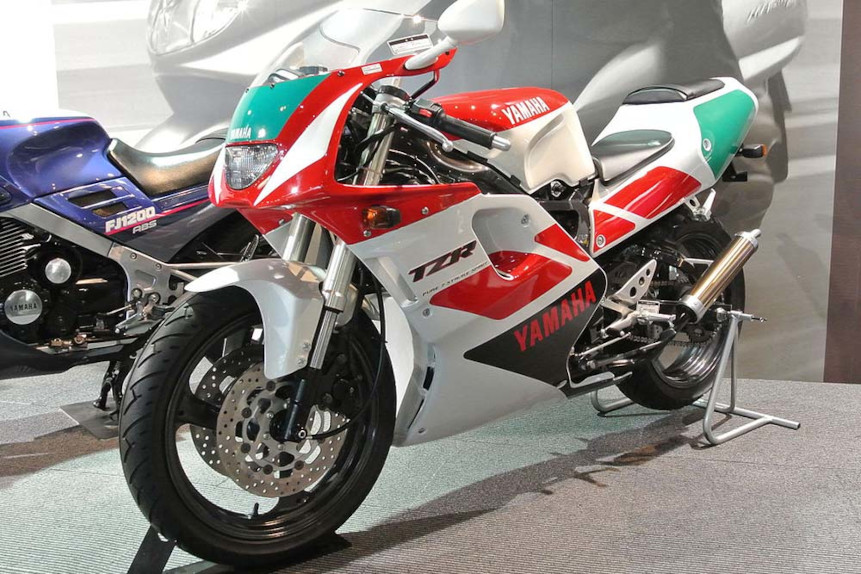
Introduced in late 1986, the TZR250 enjoyed a short spell as quarter litre class leader – deposing the Suzuki RG250 Gamma as the class king but being bested, in performance terms at least, a few years later by the Kawasaki KR-1.
The TZR employed the chassis technology of the time but featured an engine utilising Yamaha’s fabled YPVS power valve system. And while that 45bhp parallel-twin (designated model 2MA) stayed in the Yamaha UK range for over four years, back in Japan there were a whole host of sexier and more technologically advanced TZRs satisfying local demand. Thankfully some of those made it over here through the back door…
With the fashion conscious Japanese riders looking for increasingly advanced small capacity machines (to meet licencing laws) it could be argued that these 250 and 400cc JDM (Japanese Domestic Market) machines were the most important models in the Japanese manufacturers’ ranges.
In 1989 the JDM got the 3MA ‘Reverse Cylinder’ TZR, which had a completely different parallel-twin engine and a chassis derived from the TZ race bikes. That was trick enough, but in 1991 came the TZR250R (pictured), which many still consider to be one of the finest of the quarter litre classics.
The R had a V-twin motor, with the engine and frame design very close to that of the 250cc factory GP bikes. The bodywork too, looked stunning and although they were never officially exported, some were imported by the many grey importers of the time.
The only issue with the TZR250R was a lack of power. Like all JDM 250s, it was restricted to just 45bhp, and tuning/derestricting is very difficult. Still, it looks a million dollars, and has handling to boot.
Honda NSR250R
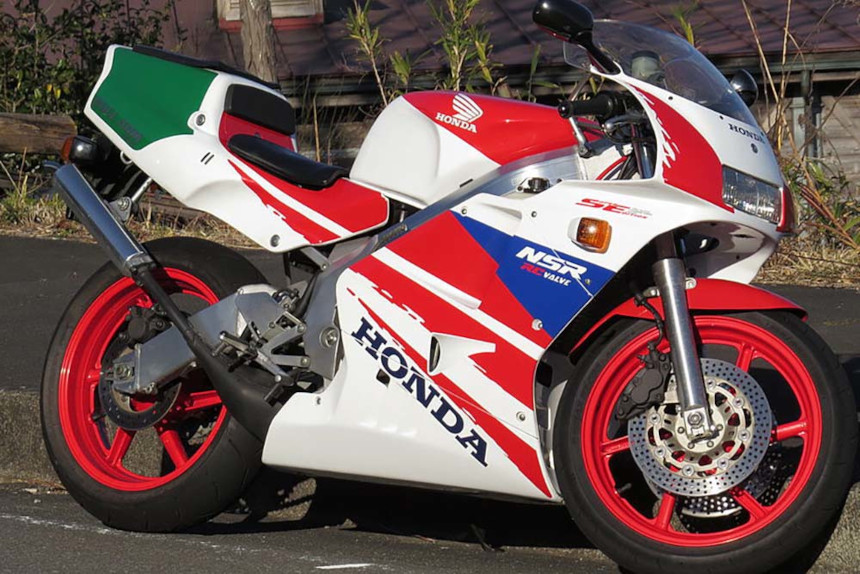
It wasn’t just Yamaha making unobtainable 250s in the ‘80s and ‘90s, because in a battle for tech honours in Japan, Honda was (of course) right up there and leading the way in the home market.
NSR was Honda’s designation for its ultra exclusive factory racing two-strokes, namely the NSR250 and NSR500 Grand Prix bikes. Honda had made the NS250R road bike in the mid-‘80s, but it was quite a big deal to see that extra R appear on a road going production bike. Thankfully it lived up to its name.
There were four generations of the NSR250R, over just seven years. The first, model code MC16, appeared in 1987, and was superseded the following year by the MC18, which featured a new engine management system and a slightly sharper design. We saw the MC21 (pictured) arrive in 1990, with a new frame characterised by the ‘gullarm’ swingarm, but it was 1994’s MC28 that would be the most desirable of the lot, complete with single sided swingarm and smartcard ignition system.
The NSRs had the looks and they had the handling, even if they didn’t quite have the performance to match. Like the racers, the NSR250R featured a 90-degree V-twin engine, although Japanese Domestic Models had restrictions on power (45bhp) and top speed (112mph), making them a good bit slower than the RGVs and KR-1s we got in Europe.
That said, plenty of NSRs made it to the UK. Japanese laws meant that the costs of keeping bikes as young as three years old on the road was expensive, and usually saw them shoved in a shipping container destined for Folkestone, instead of going through the equivalent of the MoT.
Aprilia RS250
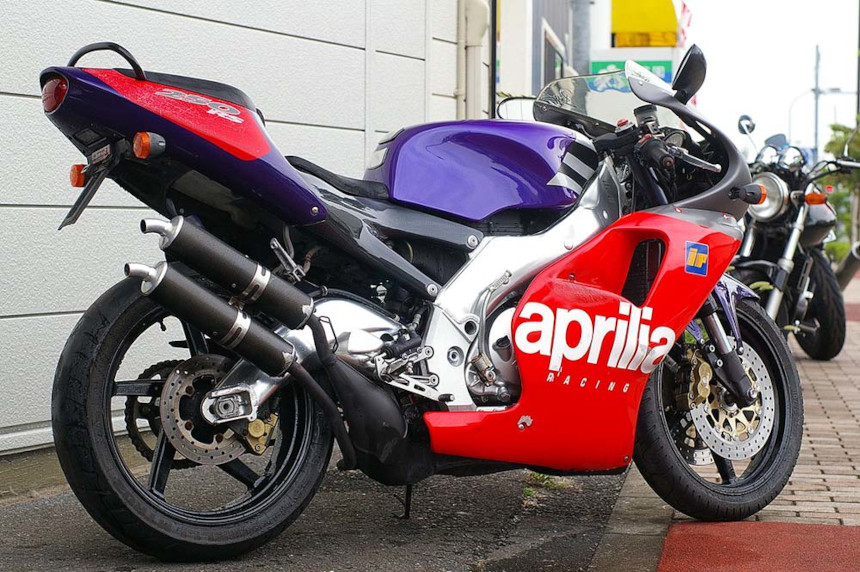
While the 250 craze had been driven by demand from the Japanese home market, by the mid-1990s fashions had changed and Tokyo had gone retro crazy. Development of small sports bikes dried up but, thankfully for us Europeans, Italy’s Aprilia was racing to our rescue.
Aprilia bossed the 125 and 250cc Grand Prix classes in the 1990s and had the raciest sports 125 with the RS125, so it made perfect sense for them to produce the ultimate road going 250 as well.
Launched in 1995, Aprilia had planned to power their race rep with a modified version of their factory racers’ engines but, after proving too much of an engineering challenge, the Italian company reached a deal with Suzuki to use the engine from the VJ22 RGV250.
Aprilia developed their own engine management system and exhausts, and wrapped it all in a frame and bodywork fit for a Grand Prix racer. Add in some stunning liveries inspired by the winning race bikes (ridden by the likes of Valentino Rossi and Max Biaggi, no less) and none of those pesky JDM restrictors, it was undoubtedly the ultimate incarnation of the 250 race replica.
The RS250 remained on sale until 2002, by which time European emissions laws all but killed off two-strokes.



